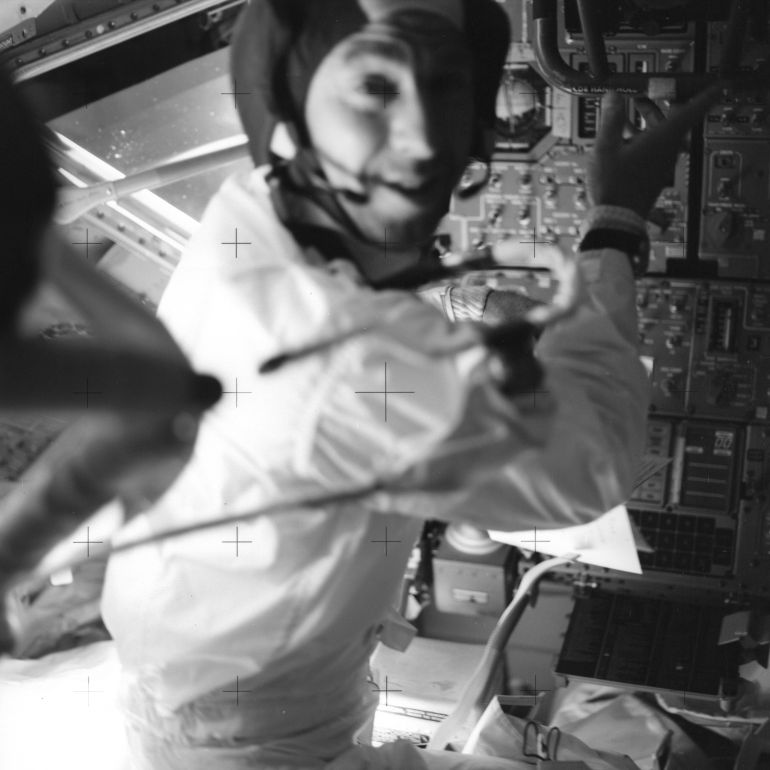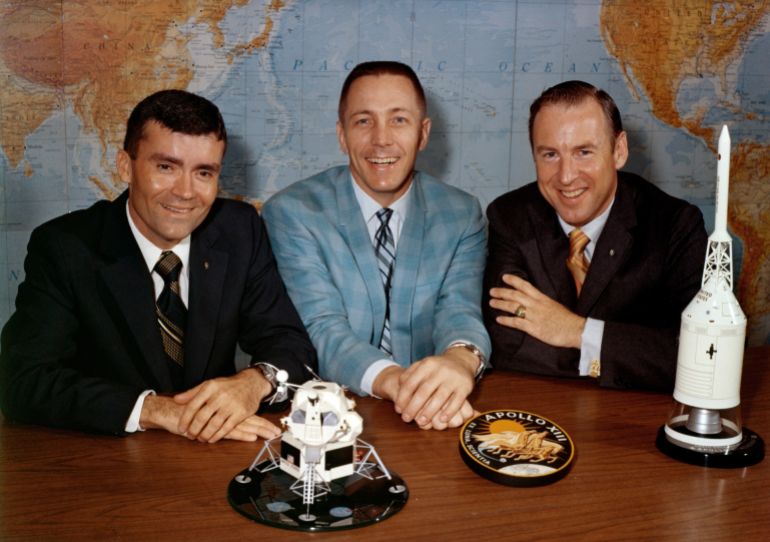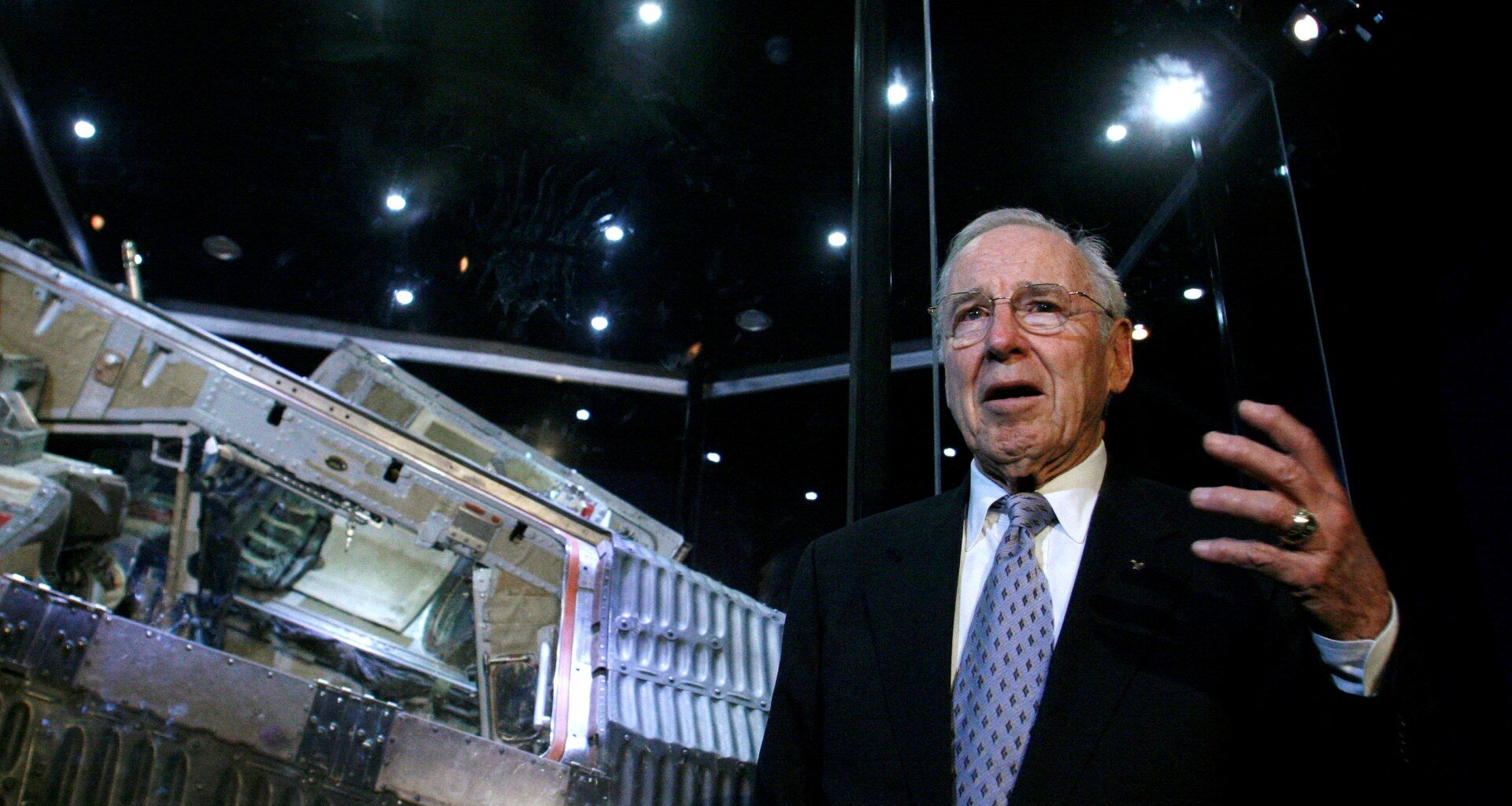The National Aeronautics and Space Administration (NASA) in the United States has confirmed that one of its most famous space explorers, Jim Lovell, has died at age 97.
In a statement on Friday, Transportation Secretary and NASA administrator Sean Duffy confirmed that Lovell passed away at his home in Lake Forest, Illinois.
Lovell is perhaps most famous for his 1968 voyage on the Apollo 8 space flight, which made history as the first voyage to take human beings past the Earth’s gravitational field and around the moon.
For that flight, which took more than six days to complete, Lovell served as command module pilot, alongside astronauts Frank Borman II and William Anders. They circled the moon 10 times before returning to Earth.
Lovell was the last surviving crew member from that flight.
He also was a key figure on the doomed 1970 Apollo 13 flight, which was meant to conduct the third lunar landing.
But the flight met disaster when its oxygen tank exploded in space, endangering all on board. It was unclear whether Lovell, the most experienced astronaut on the flight, and his two colleagues, John Swigert Jr and Fred Haise Jr, would return from the voyage alive.
As mission commander, however, Lovell helped steer their lunar module back to Earth in a death-defying splashdown. It was his last space flight, and he has been praised for his calm under pressure.
“Jim’s character and steadfast courage helped our nation reach the Moon and turned a potential tragedy into a success,” Duffy said.
“From a pair of pioneering Gemini missions to the successes of Apollo, Jim helped our nation forge a historic path in space that carries us forward to upcoming Artemis missions to the Moon and beyond.”
We are saddened by the passing of Jim Lovell, commander of Apollo 13 and a four-time spaceflight veteran.
Lovell’s life and work inspired millions. His courage under pressure helped forge our path to the Moon and beyond—a journey that continues today. https://t.co/AjT8qmxsZI pic.twitter.com/jBlxzgrmSk
— NASA (@NASA) August 8, 2025
Known by the nickname Smilin’ Jim, Lovell was born in Cleveland, Ohio, on March 25, 1928.
He began his aviation career in the 1950s as part of the US Navy, where he completed a four-year tour of duty as a test pilot in Maryland. During his naval service, he logged more than 7,000 hours of flying time.
Then, in 1962, he was selected by NASA to be an astronaut. His first space flight took place as part of the Gemini project, a series of flights designed to improve space travel in order to pave the way for the later Apollo moon missions.
At first, Lovell was a backup pilot for Gemini 4. But he got his break with the Gemini 7 mission in 1965, which was only the 12th crewed flight the US had sent to space by that point.
He was paired with Borman, his future Apollo 8 colleague, for that launch, and together, they made a rendezvous in space with Gemini 6 — a first-time feat for two crewed flights.
Lovell was also on the spacecraft for the final mission of the project, Gemini 12, which paired him with Buzz Aldrin, then a rookie.
With the Gemini missions complete, NASA turned its attention to putting a man on the moon.
Lovell and his colleagues on Apollo 8 helped make that possible, with NASA dubbing the circumnavigation “man’s maiden voyage to the moon”.
“We could actually see the Earth start to shrink,” Lovell would later tell the TV channel CSPAN. “It reminds me of being in a car, looking out the back window, going inside a tunnel and seeing the tunnel entrance shrink as you go farther into the tunnel. It was quite a sensation to think about.”
“You had to pinch yourself: Hey, we’re really going to the moon.”
 Astronaut Jim Lovell is photographed inside the Apollo 13 lunar module in April 1970 [NASA via AP]
Astronaut Jim Lovell is photographed inside the Apollo 13 lunar module in April 1970 [NASA via AP]
In 1969, Apollo 11 would make good on the promise of Lovell’s mission, achieving the first successful moon landing of a crewed flight. Lovell’s former colleague Aldrin joined Neil Armstrong in being the first human beings to plant a foot on the moon.
Lovell was meant to land on the moon himself. He was 42 at the time of his flight with Apollo 13, which was likewise charged with completing a lunar landing.
But two days into the 10-day mission, the crew heard an explosion. “OK, Houston,” Lovell’s colleague Swigert radioed back to Earth, coining a famous phrase. “We’ve had a problem here.”
Lovell communicated that the spacecraft was “venting something out into” space. That turned out to be oxygen leaking out of an exploded tank. Another tank remained, but it was damaged, as were the fuel cells. That, in turn, risked leaving the astronauts without electricity.
The fate of the three astronauts on board the Apollo 13 mission, including Lovell, captured international attention.
The crew ultimately transformed their lunar module into a “lifeboat” and faced dangerous levels of carbon dioxide as they looped around the moon to boomerang back to Earth.
 Fred Haise, Jack Swigert and Jim Lovell gather for a photo on the day before launch of Apollo 13 on April 10, 1970 [NASA via AP]
Fred Haise, Jack Swigert and Jim Lovell gather for a photo on the day before launch of Apollo 13 on April 10, 1970 [NASA via AP]
Lovell ultimately co-wrote a book about his experience, Lost Moon, and the American actor Tom Hanks played him in a 1995 film adaptation, called Apollo 13.
Lovell himself made a cameo appearance opposite Hanks.
During his final days, Lovell met with Veterans Affairs Secretary Doug Collins, who wrote about the meeting on social media.
“Yesterday, I was honored to meet one of my personal heroes, Navy Veteran and astronaut Jim Lovell,” Collins said. “Jim’s remarkable leadership during the historic Apollo 13 mission is an inspiration to all!”
Upon learning of Lovell’s death, Collins joined in the outpouring of condolences: “Astronaut and Navy Veteran Jim Lovell was a legend, plain and simple.”
Lovell is survived by his four children.

